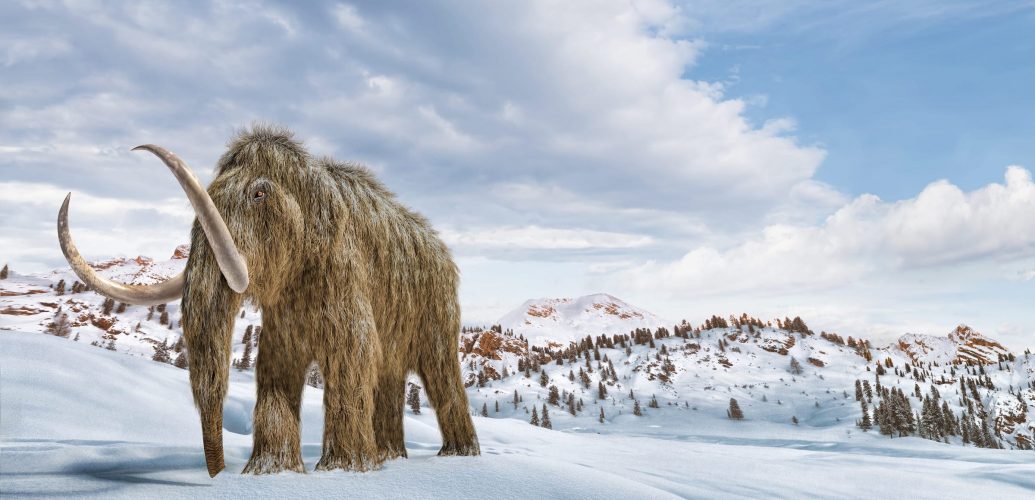Niki Wilson first fell in love with the woolly mammoth as young biologist, igniting her excitement at the idea of bringing them back from de-extinction.
Listen to Episode 205 Resurrection: Bringing back extinct animals
In the early 2000s I had a fabulous job as an interpreter at the Yukon
Beringia Interpretive Centre in Whitehorse, Yukon.
I spent my days surrounded by the skeletons of giant beaver, mammoth, and scimitar cats, chatting with visitors about the ice age and interglacial animals that once
roamed the territory. I loved every part of it, even chores like dusting.
I would slither my way up inside the bony frame of the Jefferson’s ground sloth
and run a damp cloth along the ribs and sternum, the ridges that formed the
top of the pelvis. Over time, I came to know every fissure and chip in the old
bones of our exhibits. Our woolly mammoth skeleton – a cast of the real
thing that now resides in the Milwaukee Public Museum – had butchering
marks on some of the bones. The bones date to 14,500 years ago.
Imagine the skill it would take to bring down a six-ton, three-metre-tall
mammoth with a spear?
To gain an appreciation, us staff interpreters were trained to use a spear-throwing tool called the atlatl. The atlatl supposedly gives the thrower more leverage, power, and control.
I didn’t really master the technique. While attempting to teach the skill to elementary-aged
children that came to our summer camps, I once let lose a wayward “spear”
that nailed a kid in the back. Luckily our spears were just blunt pieces of
doweling, but I was quite relieved when he told me he was fine and there
was no reason to call his parents. Meanwhile, my work colleague was
laughing so hard she rolled into the sand pit “dig site” where we buried
bones for the kids to excavate.
Those same kids sometimes came for sleep overs with birthday parties or
school trips. On those nights, I slept on the floor of our office, wondering how
long it would take the parents to settle them under the gaping maw of the
giant short-faced bear, and the penetrating gaze of taxidermized wolves. It
often went surprisingly well, though one night on rounds I met a wide-awake
little guy in blue jammies, shuffling out of the back exhibit hall. He took my
hand, and we went for a walk to the mammoth skeleton. He asked me how
it died. I told him it became someone’s dinner. He just nodded, apparently
accepting that this was the way of things. We stood there for quite a while,
hand in hand, wondering at the long tusks curving toward the stars.
That kid would be a man in his late 20s now, but the mammoth skeleton is still
featured in the main gallery. I hope it calls to other kids in the night, thrilling
them with what was once possible, and stirring their interest in the wild
things that remain.
You might also enjoy:
Behind The Scenes: Making Nature Documentaries

